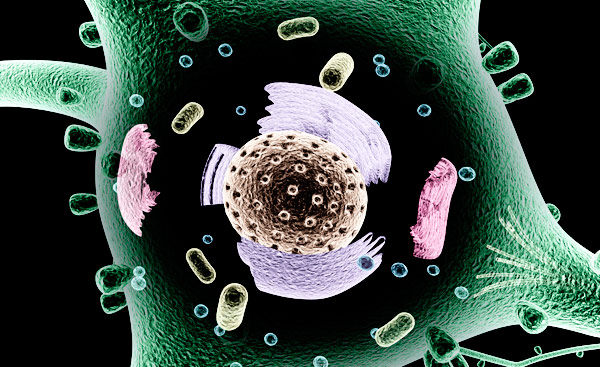Common Characteristics of Modern Diseases

What are the shared characteristics among the following diseases?
- Genetic diseases: autism, schizophrenia, bipolar disorder and mitochondrial disease
- Diet related diseases: obesity, diabetes, cardiovascular disease and metabolic disease
- Diet/Environment related diseases: cancer, major depressive disorder and asthma
- Age related diseases: Alzheimer’s, AMD and Parkinson's
Almost all of the patients affected with these diseases show dysfunction in energy metabolism, mitochondrial impairment and elevated levels of inflammation as evidenced by pro-inflammatory cytokines-Interleukin-6, Tumor Necrosis Factor and suppressed anti-inflammatory cytokine-Interleukin-8.
When scientists conducted studies on the protein samples (Proteomic Study) and metabolite samples (Metabolomic Study) from patients with many of these seemingly disparate disorders, they exhibit common and overlapping proteins and metabolites. These are mostly related to how the body stores and spends energy derived from dietary sources, such as carbohydrates, proteins and fats.
Autism: A study of plasma from 30 autistic children was compared with 30 age-matching control samples. The analysis showed impairment of energy storage and expenditure 1.
Schizophrenia: A comparative proteome analysis using two-dimensional gel electrophoresis of schizophrenia patients compared with healthy control’s (left posterior superior temporal gyrus), was analyzed by mass spectrometry. The study revealed 11 down-regulated and 14 up-regulated proteins, most of them related to energy metabolism 2.
Diabetes: A proteomic study of patients with type-2 diabetes and obesity revealed a reduction in mitochondrial proteins in insulin-resistant muscle. This suggests changes in muscle structure, protein degradation and folding also characterize insulin resistance 3. Mitochondria is the central organelle in the cell responsible for energy metabolism housing TCA cycles, Fatty acid oxidation and oxidative phosphorylation.
Cardiovascular Disorders: The heart needs a continuous energy supply for support. This requirement is met by the daily synthesis of approximately 30 kg of the high-energy molecule adenosine triphosphate (ATP) 4, produced mainly by mitochondrial oxidative phosphorylation. Under normal conditions, the heart generates ATP by the consumption of energy substrates, mainly fatty acids (roughly 70%) with glucose and lactate contributing to the rest 5. The heart is also able to utilize other forms of energy-ketone bodies. It is now well established that the metabolism shifts from fatty acids to glucose under distressed cardiac conditions, such as heart failure, cardiomyopathy, etc., indicate a compromised energy metabolism. Heart failure was associated with tissue-specific alteration of the ketone body metabolism. In advanced heart failure, skeletal-muscle ketone body utilization was impaired, whereas myocardial ketone body utilization was preserved 6. Therefore, in at least some cardiovascular conditions, ketone bodies potentially become a more significant fuel source, particularly in the context of cardiomyopathy, in which the utilization of both fatty acids and glucose is impaired.
Inflammatory Disorders: Inflammatory disorders such as irritable bowel syndrome (IBS), inflammatory bowel diseases (IBD), rheumatoid arthritis, etc. are characterized by a higher level of pro-inflammatory cytokines. For example, irritable bowel syndrome (IBS) is characterized by an augmented cellular immune response with enhanced production of pro-inflammatory cytokines such as IL-6, TNF-α. This was reported in a study of 55 IBS patients as compared to age-sex matched healthy controls 7. Similarly, most of the effective monoclonal antibodies approved to manage rheumatoid arthritis, e.g., inhibit IL-6 and TNF-α cytokines 8, improve the disease profile.
Cancer: It has long been recognized that cancer cells have a higher rate of metabolism to support their accelerated proliferation rate. The disruption of equilibrium among glycolysis in cytoplasm, TCA cycles in mitochondria, oxidative phosphorylation and the signaling mechanisms lead to a metabolic switch that is followed by an uncontrolled proliferation 9 - 11.
- Clinical Biochemistry 42 (2009) 949–957
- BMC Psychiatry 2009, 9:17
- Diabetes January 2010 vol. 59 no. 1 33-42
- Cardiovascular Medicine. 3rd ed. London: Springer-Verlag (London); 2007. p1157–1175.
- Cardiovasc Drug Ther 2007; 21: 5 –7.
- Tex Heart Inst J. 2011; 38(5): 533–538.
- Gastroenterology Volume 132, Issue 3, Pages 913-920.
- Inflamm Bowel Dis 2007;13: 1016 –1023).
- Nat Rev Cancer 2010; 10: 267-277
- Nat Rev Cancer 2011; 11: 85-95
- Science 1956; 123: 309-314,
Disclaimer
Before starting any diet, you should speak to your doctor. You must not rely on the information on this website as an alternative to medical advice ftor. You must not rely on the information on this website as an alternative to medical advice from your doctor or other professional healthcare provider. If you have any specific questions about any medical matter, you should consult your doctor or other professional healthcare provider. If you think you may be suffering from any medical condition, you should seek immediate medical attention. You should never delay seeking medical advice, disregard medical advice or discontinue medical treatment because of information on this website.









